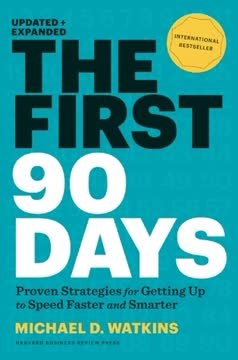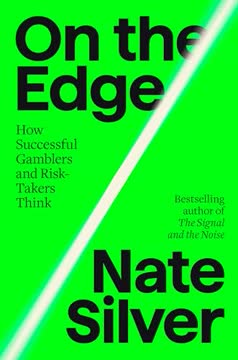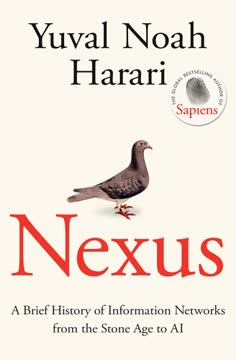つの重要なポイント
1. イノベーションは偶然の天才的な行為ではなく、規律あるプロセスである
イノベーションは、既存のビジネス、公共サービス機関、または家庭のキッチンで一人の個人が始めた新しいベンチャーにおいても、起業家精神の特定の機能である。
体系的アプローチ: イノベーションは、稲妻が落ちるのを待つことではなく、意図的で体系的なプロセスである。成功した起業家はこの体系的な実践にコミットし、企業の経済的または社会的な潜在能力に変化をもたらす機会を常に探している。
神話の打破: 「起業家の個性」という考え方は大部分が神話である。多くの成功した起業家はこの型に当てはまらず、逆に起業家的な特性を持つとされる多くの人々が成功したイノベーションを生み出していない。イノベーターを際立たせるのは、イノベーションの規律ある実践に対する献身である。
重要な要素: この規律あるアプローチには以下が含まれる:
- ビジネス環境を継続的に分析し、機会を見つける
- アイデアを評価し追求するための構造化されたプロセスを開発する
- 組織内でイノベーションを支援し育成するシステムを作る
- イノベーションの努力を定期的に測定し、改善する
2. 成功したイノベーターは7つの機会の源を体系的に分析する
企業や業界内には、予期しない出来事、不一致、プロセスのニーズ、業界および市場の変化という4つの機会の領域が存在する。
内部の機会: 企業や業界内で、イノベーターは以下を探す:
- 予期しない出来事: 期待から外れた驚き、失敗、成功
- 不一致: 現実と仮定の間の矛盾
- プロセスのニーズ: 既存のプロセスの非効率やギャップ
- 業界および市場の変化: 業界構造や市場動向の変化
外部の機会: より広い環境で、イノベーターは以下を分析する:
- 人口動態の変化: 人口、年齢分布、教育などの変化
- 認識の変化: 人々が状況をどのように見て解釈するか
- 新しい知識: 科学的、技術的、社会的な突破口
これらの7つの領域を体系的に調査することで、イノベーターは他の人が見逃すかもしれない価値ある機会を特定する可能性を高める。この構造化されたアプローチは、イノベーションを偶然の活動からより予測可能で管理可能なプロセスに変えるのに役立つ。
3. イノベーションには概念的および知覚的スキルが必要である
成功したイノベーターは、右脳と左脳の両方を使用する。彼らは、イノベーションが機会を満たすために何であるべきかを分析的に考え出し、その後、潜在的なユーザーを見て、彼らの期待、価値観、ニーズを研究する。
分析的思考: イノベーターは、機会、市場条件、潜在的な解決策を厳密に分析する必要がある。これには以下が含まれる:
- データの収集と解釈
- パターンとトレンドの特定
- アイデアの実現可能性と潜在的な影響の評価
共感的観察: 同様に重要なのは、ユーザーを理解し、つながる能力である。これには以下が含まれる:
- 顧客の環境での直接観察
- 未満のニーズやフラストレーションを明らかにするための積極的な傾聴
- イノベーションの努力を情報に基づいて行うための洞察の統合
バランスの取れたアプローチ: 最も成功したイノベーターは、これら二つのアプローチのバランスを取る。データと分析を使用して努力を導き、直感と共感を頼りに隠れた機会を見つけ、真に意味のある解決策を作り出す。このスキルの組み合わせにより、潜在的なイノベーションを特定するだけでなく、ユーザーや市場に共鳴する形でそれらを形作ることができる。
4. 効果的なイノベーションは小さく焦点を絞って始まる
効果的なイノベーションは小さく始まる。それは壮大なものではない。例えば、電車がレールに沿って走行中に電力を引き出すことを可能にするイノベーションは、電気ストリートカーを可能にした。
小さく始める: 一般的な信念に反して、最も成功したイノベーションはしばしば特定の問題に対する控えめで焦点を絞った解決策として始まる。このアプローチにより、イノベーターは以下を行うことができる:
- 最小限のリスクでアイデアをテストし改良する
- 迅速に現実のフィードバックを収集する
- 初期の結果に基づいて反復し改善する
明確な焦点: 効果的なイノベーションは、複数の問題を同時に解決しようとするのではなく、1つの問題をうまく解決する。この明確な目的は以下を助ける:
- 開発と実装の簡素化
- ユーザーに価値提案を明確に伝える
- 混乱や機能の過剰を避ける
焦点を絞ったイノベーションの例:
- 標準化された数のマッチが入ったマッチ箱
- 電気ストリートカーの電力供給システム
- 再配置可能な接着剤を使用したポストイットノート
小さく始め、レーザーフォーカスを維持することで、イノベーターは開発、実装、スケールが容易な解決策を作り出すことができる。このアプローチはまた、迅速な学習と適応を可能にし、長期的な成功の可能性を高める。
5. イノベーションは創造性や才能だけでなく、努力が必要である
何よりも、イノベーションは天才ではなく、努力である。それには知識が必要であり、多くの場合、独創性が必要であり、そして集中が必要である。
天才の神話の打破: 創造性や才能が役割を果たす一方で、成功したイノベーションは主に献身的で集中した努力の結果である。この努力には以下が含まれる:
- 継続的な学習と知識の取得
- 持続的な問題解決と実験
- アイデアの規律ある実行
イノベーションの仕事の主要な要素:
- 知識の収集: 業界のトレンド、技術の進歩、市場の動向について情報を得る
- 体系的な分析: 機会と潜在的な解決策を厳密に検討する
- 実験: 仮説をテストし、試行錯誤を通じてアイデアを洗練する
- 持続力: 挫折を乗り越え、挑戦にもかかわらず前進し続ける
集中した努力: イノベーションには特定の領域や問題に対する持続的で意図的な集中が必要である。成功したイノベーターは通常、明確に定義された領域内で努力を集中させ、深い専門知識と洞察を発展させる。
イノベーションを天才の閃きではなく、努力と認識することで、組織は持続的なイノベーションの努力を支援するシステムと文化を作り出すことができる。この視点は、持続力、学習、継続的な改善を奨励し、長期的なイノベーションの成功に不可欠な要素となる。
6. 企業はイノベーションに対する財務ツールのバイアスを克服する必要がある
我々はこれらの容疑者に対して犯罪を告発する:割引キャッシュフロー(DCF)および正味現在価値(NPV)を使用して投資機会を評価することは、イノベーションへの投資を進めることの実際のリターンと利益を過小評価させる。
バイアスの認識: 一般的な財務ツールと指標は、以下の理由でイノベーションに対する障壁を無意識に作り出すことがある:
- イノベーションプロジェクトの長期的な潜在能力を過小評価する
- 短期的な財務パフォーマンスを過度に重視する
- 無行動や緩やかな衰退のコストを考慮しない
問題のあるツール:
- 割引キャッシュフロー(DCF)および正味現在価値(NPV): 将来の成長可能性やイノベーションしないことのコストを考慮しないため、イノベーションの価値を過小評価することが多い
- 固定費および埋没費用の会計: イノベーション努力において、新規参入者に対して既存企業を不公平に優遇する可能性がある
- 短期的な1株当たり利益の強調: 長期的なイノベーション投資からリソースを逸らす
バイアスの克服: イノベーションを支援するために、企業は以下を行うべきである:
- イノベーションプロジェクトの潜在能力をよりよく捉える代替評価方法を使用する
- 即時の財務リターンを超えたイノベーションの戦略的価値を考慮する
- 短期的なパフォーマンスと長期的なイノベーション目標をバランスさせる指標を開発する
- 伝統的な財務ツールの限界について意思決定者を教育する
これらのバイアスを認識し対処することで、企業はイノベーションを支援する環境を作り出し、リソース配分とプロジェクト評価に関するより情報に基づいた意思決定を行うことができる。
7. 不確実なベンチャーには発見駆動型の計画が重要である
発見駆動型の計画は、新しいベンチャーの計画とより従来のビジネスラインの計画の違いを認識する実践的なツールである。
不確実性への適応: 伝統的な計画方法は、高い不確実性のためにイノベーティブなベンチャーに適用すると失敗することが多い。発見駆動型の計画は以下を行うことでこれに対処する:
- 仮定を事実ではなく仮説として扱う
- プロセス全体を通じて学習と適応を強調する
- プロジェクトを小さな、テスト可能なマイルストーンに分割する
発見駆動型計画の主要な要素:
- 逆収益計算書: 必要な収益性から逆算して計画を立てる
- プロフォーマ運用仕様: 成功を達成するために必要な活動を詳細に記述する
- 仮定チェックリスト: 主要な仮定を明示的にリストアップし追跡する
- マイルストーン計画: 仮定をテストし、コースを調整するための具体的なイベントを使用する
利点:
- 重要な仮定を早期に明らかにしテストすることでリスクを軽減する
- より柔軟で適応的なプロジェクト管理を可能にする
- 潜在的な落とし穴や機会を迅速に特定する
- イノベーションプロセス全体でより情報に基づいた意思決定をサポートする
発見駆動型の計画を採用することで、組織はイノベーションプロジェクトに内在する不確実性をよりうまくナビゲートし、成功の可能性を高めながら不要なリスクと投資を最小限に抑えることができる。
8. イノベーションとコアビジネスのバランスが長期的な成功の鍵である
現実には、イノベーションの取り組みは、ホストの敵対関係を橋渡しするパートナーシップによって実行されなければならない。これは、専任チームと、継続的な運用の卓越性を維持する責任を負うユニットであるパフォーマンスエンジンとの間のパートナーシップである。
緊張管理: 成功した企業は、コアビジネス(「パフォーマンスエンジン」)のニーズとイノベーションの取り組みの要求をバランスさせる必要がある。これには以下が必要である:
- イノベーションチームとコアビジネスユニットの間に構造化されたパートナーシップを作る
- 安定性と変化の両方をサポートするシステムを開発する
- 現在の運用と将来の機会の間でリソースを効果的に配分する
主要な戦略:
- 専任のイノベーションチーム: 新しいアイデアを探求する自由を持つ別個のユニットを作る
- クロスファンクショナルなコラボレーション: イノベーターとコアビジネスの専門家の間の相互作用を奨励する
- 柔軟なリソース配分: イノベーションとコア活動の間で必要に応じてリソースをシフトするメカニズムを開発する
- 両手利きのリーダーシップ: 効率とイノベーションの両方を同時に管理するリーダーを育成する
課題の克服: イノベーションとコアビジネスのバランスを取る際の一般的な障害には以下が含まれる:
- イノベーティブなユニットと伝統的なユニットの間の文化的衝突
- 新しい取り組みと既存の運用の間のリソース競争
- 長期的なイノベーション努力を抑制する短期的なパフォーマンス圧力
イノベーションの取り組みとコアビジネス活動の関係を積極的に管理することで、企業は現在のパフォーマンスと将来の成長の両方をサポートする環境を作り出し、長期的な成功と持続可能性を確保することができる。
9. 組織の構造と文化はイノベーションの成功に大きな影響を与える
既存のビジネス内で新しいベンチャーが立ち上げられる場合でも、文化の衝突は、すべての楽しみを持つ人々とす
最終更新日:
FAQ
What's "HBR's 10 Must Reads on Innovation" about?
- Definitive collection: The book is a curated collection of articles from the Harvard Business Review, focusing on innovation as a critical component for leadership and management success.
- Diverse topics: It covers a range of topics including change management, collaboration, communication, leadership, and strategic marketing, all through the lens of innovation.
- Practical insights: The book provides practical insights and strategies for both aspiring and experienced leaders to foster innovation within their organizations.
- Comprehensive guide: It serves as a comprehensive guide to understanding and implementing innovative practices in various business contexts.
Why should I read "HBR's 10 Must Reads on Innovation"?
- Essential for leaders: The book is essential for leaders who want to drive innovation and stay competitive in their industries.
- Expert insights: It offers insights from renowned experts and thought leaders in the field of innovation and business strategy.
- Actionable strategies: Readers will find actionable strategies and frameworks that can be applied to real-world business challenges.
- Broad applicability: The concepts discussed are applicable across different industries and organizational sizes, making it a versatile resource.
What are the key takeaways of "HBR's 10 Must Reads on Innovation"?
- Innovation is systematic: Innovation should be approached as a systematic process rather than relying on sporadic flashes of genius.
- Diverse sources of innovation: Opportunities for innovation can arise from unexpected occurrences, incongruities, process needs, and changes in industry or market structures.
- Importance of assumptions: Identifying and testing assumptions is crucial in the planning and execution of innovative ventures.
- Balancing risk and reward: Successful innovation requires balancing the risks and rewards, often through disciplined planning and strategic investment.
What are the best quotes from "HBR's 10 Must Reads on Innovation" and what do they mean?
- "Innovation is the specific function of entrepreneurship." This quote by Peter F. Drucker emphasizes that innovation is central to entrepreneurial success, whether in new ventures or established businesses.
- "Discovery-driven planning acknowledges that at the start of a new venture, little is known and much is assumed." This highlights the importance of adapting plans as new information becomes available, rather than sticking rigidly to initial assumptions.
- "The greatest praise an innovation can receive is for people to say, 'This is obvious! Why didn’t I think of it? It’s so simple!'" This underscores the value of simplicity and clarity in successful innovations.
- "The real measure of success is the number of experiments that can be crowded into 24 hours." This quote from Thomas Edison, as referenced in the book, illustrates the importance of rapid experimentation in the innovation process.
How does "HBR's 10 Must Reads on Innovation" define innovation?
- Purposeful change: Innovation is defined as the effort to create purposeful, focused change in an enterprise’s economic or social potential.
- Systematic practice: It involves a systematic practice of identifying opportunities and implementing changes that enhance value.
- Beyond products: Innovation is not limited to new products but includes processes, services, and business models.
- Driven by need: It is often driven by unmet needs or changes in market dynamics, requiring a proactive approach to identify and exploit opportunities.
What is "discovery-driven planning" as discussed in "HBR's 10 Must Reads on Innovation"?
- Reverse planning: Discovery-driven planning involves starting with the desired outcome and working backward to identify the necessary steps and assumptions.
- Assumption testing: It emphasizes the importance of identifying and testing assumptions throughout the venture's development.
- Milestone-based: The approach uses milestone events to test assumptions and adjust plans accordingly, minimizing risk and maximizing learning.
- Dynamic process: Unlike traditional planning, it is a dynamic process that adapts to new information and changing circumstances.
How does "HBR's 10 Must Reads on Innovation" suggest managing risk and reward in innovation?
- Risk matrix: The book introduces a risk matrix to assess the probability of success or failure based on familiarity with the market and technology.
- R-W-W screen: It recommends using the R-W-W (Real, Win, Worth it) screen to evaluate the feasibility and potential of innovation projects.
- Balanced portfolio: A balanced innovation portfolio should include a mix of incremental and major innovations to manage risk and reward effectively.
- Strategic alignment: Innovations should align with the company’s strategic goals and be evaluated for their potential to enhance competitive advantage.
What role do assumptions play in innovation according to "HBR's 10 Must Reads on Innovation"?
- Foundation of planning: Assumptions form the foundation of planning for new ventures and must be explicitly identified and tested.
- Potential pitfalls: Unchecked assumptions can lead to significant failures if they prove to be incorrect, as they often underpin critical business decisions.
- Checklist approach: The book advocates for a checklist approach to track and validate assumptions throughout the innovation process.
- Dynamic adjustment: As new information becomes available, assumptions should be revisited and adjusted to ensure the venture remains viable.
How does "HBR's 10 Must Reads on Innovation" address the challenges of innovation in established companies?
- Cultural barriers: Established companies often face cultural barriers that stifle innovation, such as resistance to change and risk aversion.
- Structural challenges: Organizational structures may need to be adjusted to facilitate innovation, such as creating cross-functional teams or dedicated innovation units.
- Resource allocation: Proper allocation of resources, including funding and talent, is crucial to support innovative initiatives.
- Leadership support: Strong leadership is needed to champion innovation and create an environment that encourages experimentation and learning.
What is the "innovation pyramid" concept in "HBR's 10 Must Reads on Innovation"?
- Three-tiered approach: The innovation pyramid consists of a few big bets at the top, a portfolio of promising midrange ideas, and a broad base of early-stage or incremental innovations.
- Balanced investment: It advocates for balanced investment across these tiers to ensure a steady flow of innovations and manage risk.
- Influence flow: Influence flows both ways in the pyramid, with big bets guiding smaller innovations and small wins potentially leading to major breakthroughs.
- Comprehensive strategy: This approach provides a comprehensive strategy for managing innovation across different levels of risk and potential impact.
How does "HBR's 10 Must Reads on Innovation" suggest fostering a culture of innovation?
- Encourage experimentation: A culture of innovation encourages experimentation and learning from failure, rather than punishing mistakes.
- Cross-functional collaboration: Promoting cross-functional collaboration and communication helps break down silos and fosters creative problem-solving.
- Leadership support: Leaders should actively support and participate in innovation efforts, providing resources and removing barriers.
- Recognition and rewards: Recognizing and rewarding innovative efforts can motivate employees and reinforce the importance of innovation within the organization.
What are the common myths of product development addressed in "HBR's 10 Must Reads on Innovation"?
- High utilization myth: The belief that high utilization of resources improves performance is debunked, as it often leads to delays and inefficiencies.
- Large batch myth: Processing work in large batches is not always more economical and can increase cycle times and reduce quality.
- Plan adherence myth: Strict adherence to development plans can stifle innovation, as flexibility is needed to adapt to new insights and changes.
- Feature overload myth: Adding more features does not necessarily increase customer satisfaction and can complicate the product unnecessarily.
レビュー
本書『HBR's 10 Must Reads on Innovation』は、平均評価が5点中3.79点と賛否両論の評価を受けている。読者はピーター・ドラッカーやクレイトン・クリステンセンなどの著名な著者によるクラシックな記事のコレクションを高く評価している。多くの人々は、特にイノベーションの実施を理解する上で、ビジネスリーダーにとって洞察に富み、有用であると感じている。しかし、一部の人々は、古い例や非英語版の翻訳の質が低いことを批判している。いくつかのレビューでは、特定の記事が特に価値があると強調されている一方で、他の人々は情報が一般的すぎる、またはビジネスの概念に不慣れな人々に向いていると感じている。
Similar Books























